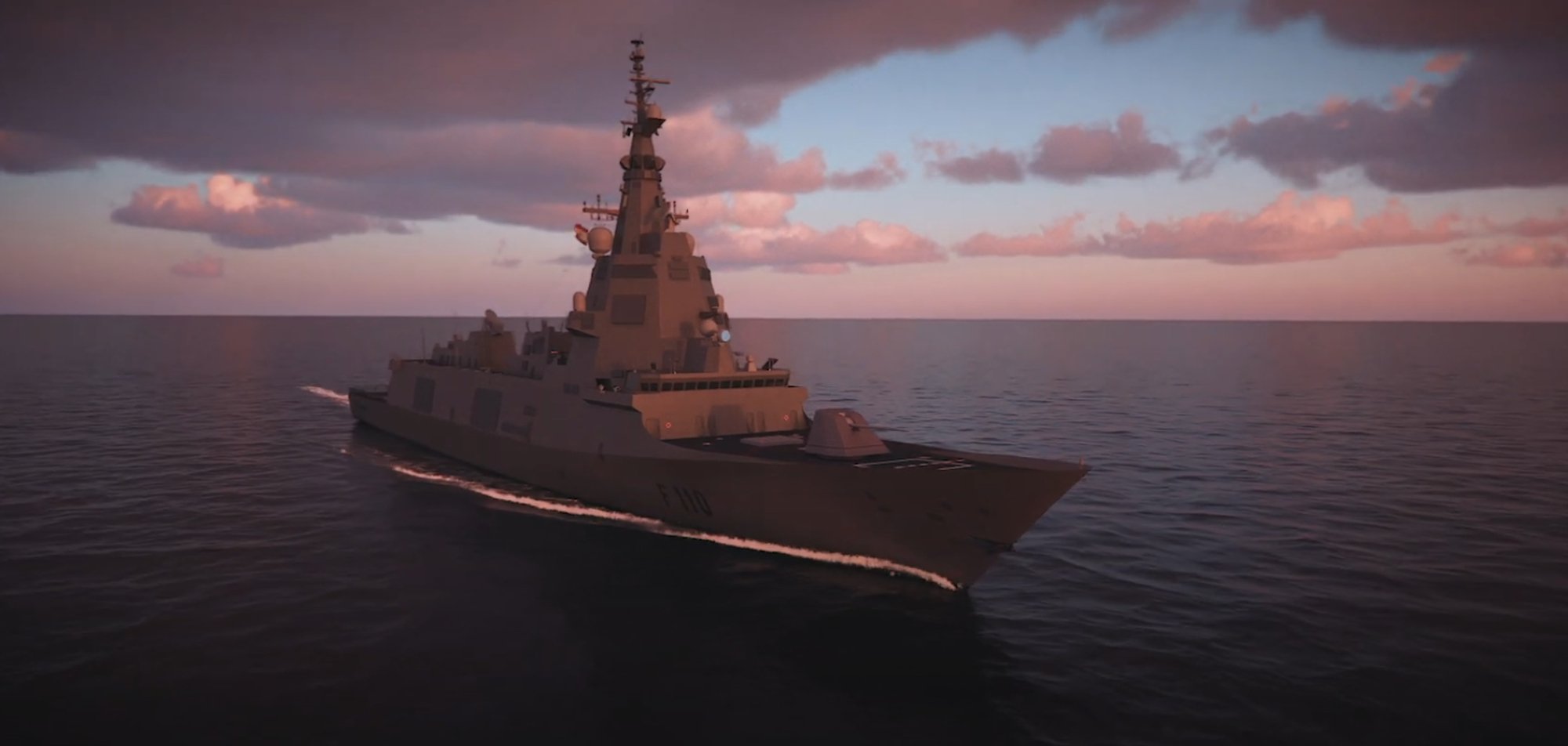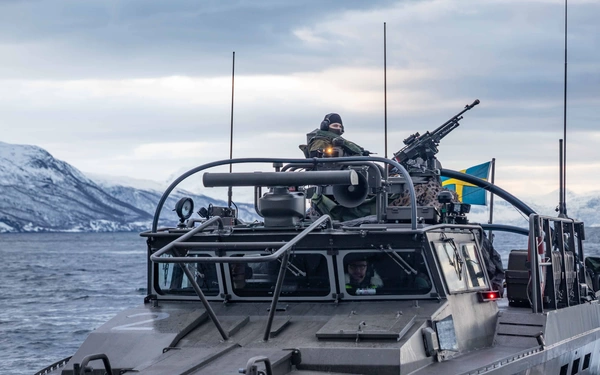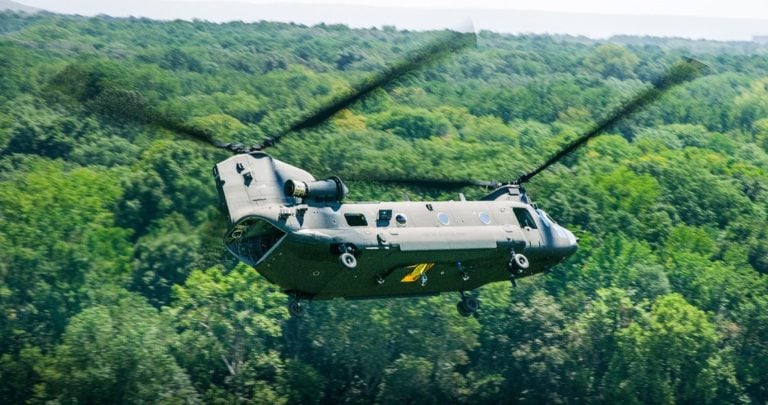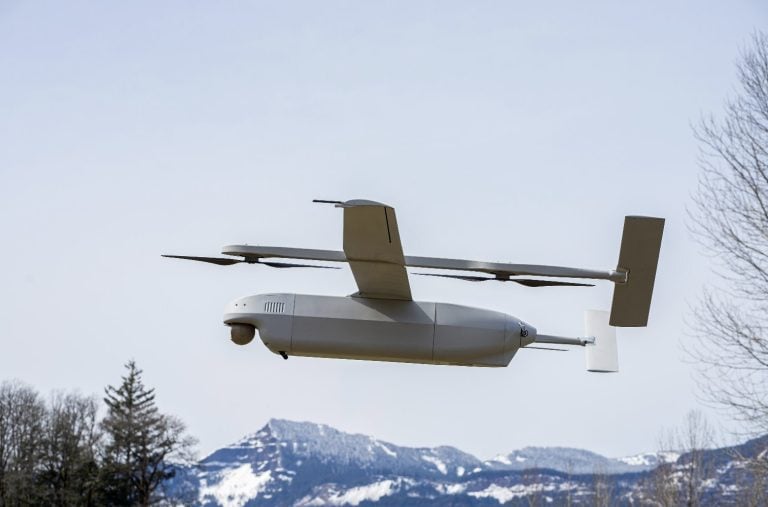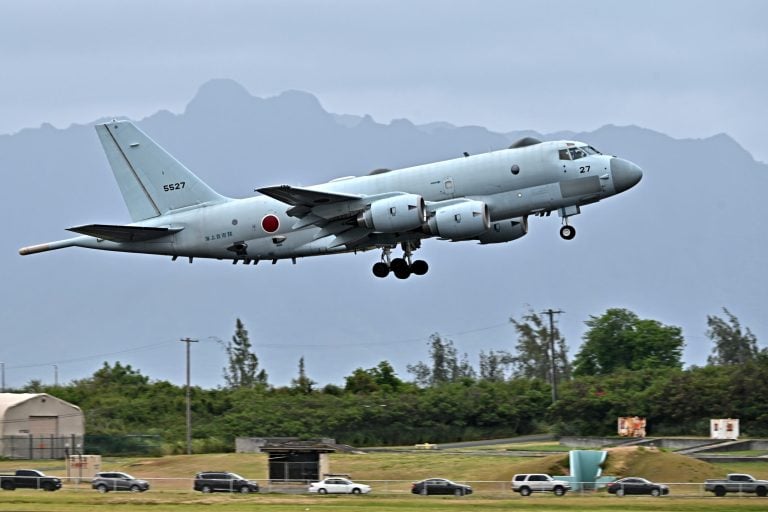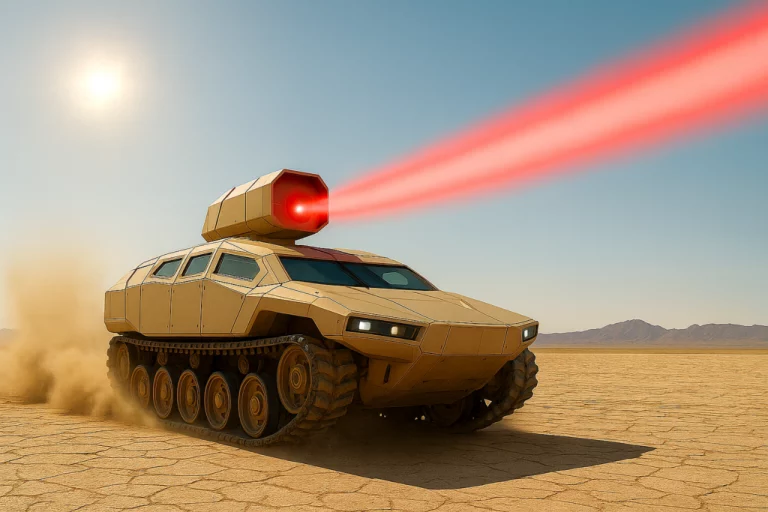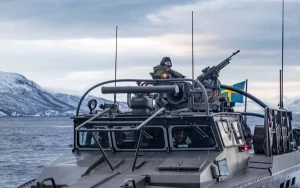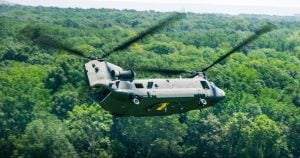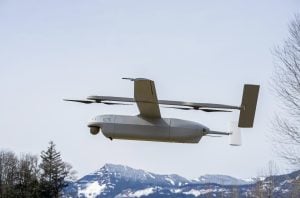Navantia has marked significant progress in the Spanish Navy’s F110 frigate program by laying the keel of the future fleet’s second hull and officially commencing construction of the third ship. These milestones were celebrated at a shipyard in Ferrol, Galicia, elevating the production level to three out of the five planned vessels for the military.
The second frigate, named Roger de Lauria (F112), had its keel laid seven months ahead of schedule. This development took place in a dedicated area designated for the complete construction of the ship, which is expected to launch later this year. Concurrently, the Menéndez de Avilés (F113) is advancing with its detailing phase, which is now three months ahead of original timelines, aided by a robotic welding cell that employs advanced digital and automated processing technologies.
Meanwhile, the lead frigate, Ramon Bonifaz (F111), is currently positioned alongside the Roger de Lauria and is approaching completion, with 85 percent of its assembly already finished.
To further enhance its capabilities, Navantia plans to establish a Digital Block Factory, designed to incorporate next-generation manufacturing techniques. This facility is slated to open next year, and the blocks produced there will be utilized in the further construction of the Menéndez de Avilés.
The commissioning schedule for the F111, F112, and F113 vessels is planned for 2025, 2026, and 2027, respectively.
Additionally, Navantia announced that the five planned F110 frigates will be complemented by a sixth “digital twin,” serving as a virtual counterpart to the actual fleet. This virtual model will utilize cloud computing, machine learning, and other internet-based solutions to optimize the operational status, utility, and maintenance of the warships in various combat scenarios.
Navantia emphasized that the F110 is a significant leap forward in enhancing the Navy’s capabilities and showcases the industrial and technological potential of both Navantia and its partner industries. This advancement is seen as a vital contribution to Spain’s strategic autonomy and is expected to facilitate new export opportunities.
The Spanish Navy’s F110 frigate boasts a length of 145 meters (476 feet) and a beam of 18 meters (59 feet). The vessel has the capacity to accommodate up to 150 personnel and can deploy a single maritime helicopter, similar in size to the SH-60 Seahawk or NH90 helicopters.
Armament on the F110 will include torpedoes, air defense missiles, anti-ship missiles, land-attack missiles, naval guns, guided munitions, and machine guns. The propulsion system features a turbine and four diesel engines, enabling speeds exceeding 25 knots (46 kilometers/29 miles per hour).
